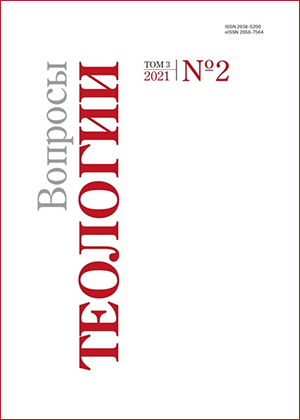Обзор исследовательской литературы по теме священства в творениях святителя Григория Богослова
Аннотация
В статье рассматривается традиция исследований темы священства в наследии свт. Григория Богослова с XIX в. по 2020 г. В обзор включены общие монографии, посвященные как становлению епископата в поздней Античности, так и специально наследию Назианзина, диссертации, публикации в периодических изданиях, словарях и энциклопедиях по указанной теме, а также по широкому кругу смежных тем, ключевые издания и переводы «Апологии» — центрального текста свт. Григория о священстве — на английском, русском, немецком, французском и итальянском языках. Предложена следующая периодизация историографии: ранний период (XIX — середина XX в.), богословские исследования «Апологии» 1950–1970-х годов, исследования и издания Ж.Бернарди, новая волна исследований 1990-х годов, ее развитие в XXI в. В последнем периоде выделены три основные тенденции и тексты Богослова о священстве рассматриваются в контексте развития в поздней Античности образа монаха-епископа, платонической политической философии, его основных богословских концептов. Показано значение исследований других аспектов творчества свт. Григория, особенно категорий θεωρία и πρᾶξις, и его автобиографических текстов. В качестве наиболее перспективных предложены две линии дальнейших исследований: интертекстуальный анализ «Апологии» и интегральный анализ всего наследия свт. Григория через призму темы священства.
Ключевые слова:
свт. Григорий Богослов, священство, историография, поздняя Античность, автобиография, богословие
Скачивания
Библиографические ссылки
References
Загрузки
Опубликован
Выпуск
Раздел
Лицензия
Статьи журнала «Вопросы теологии» находятся в открытом доступе и распространяются в соответствии с условиями Лицензионного Договора с Санкт-Петербургским государственным университетом, который бесплатно предоставляет авторам неограниченное распространение и самостоятельное архивирование.




